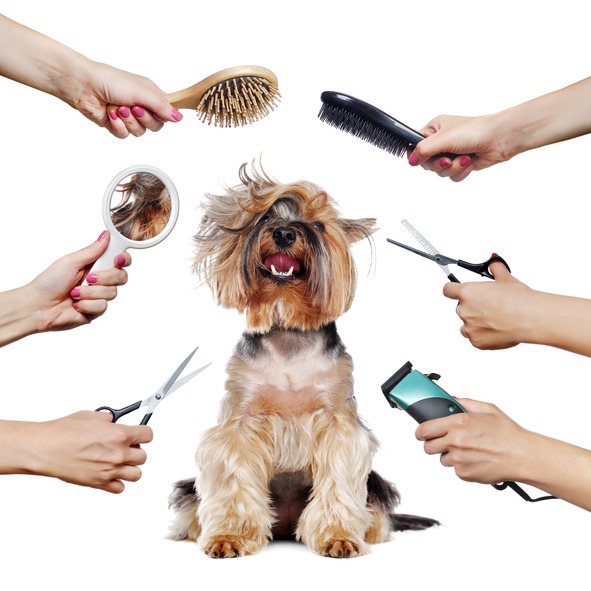Have you ever wondered if your pet’s sudden change in behavior or physical condition could be an emergency? Many pet owners face this dilemma at some point, and knowing how to identify a pet emergency can be crucial for the well-being of your beloved animal. Your pets can’t tell you what’s wrong, so it’s up to you to recognize the signs that something might be seriously off.
1. Common Indicators of an Emergency
Before diving into specific symptoms, let’s discuss some general signs that could suggest your pet needs urgent care. If you notice these signs, it might be time to take action:
-
Sudden change in behavior
-
Excessive panting or breathing difficulties
-
Loss of consciousness or coordination
-
Pale gums
-
Seizures
-
Uncontrollable bleeding
-
Inability to walk or stand
2. Breathing Issues
Breathing is essential, and when your pet struggles with it, something serious could be at play. Pay attention to:
-
Rapid breathing
-
Labored breathing
-
Coughing or choking sounds
If you’re uncertain, keep in mind that signs your pet is choking can include coughing, gagging, or pawing at the mouth. Immediate veterinary attention might be necessary in such situations.
3. Unusual Behaviors
Changes in your pet’s regular behavior can also indicate a medical emergency. Look for:
-
Sudden aggression
-
Increased vocalization
-
Unusual quietness or lethargy
-
Excessive hiding If these occur without a known cause, your pet might need a medical check-up soon.
4. Loss of Appetite or Thirst
Sometimes, pets refuse food and water; a deviation from their usual eating habits could be a sign of illness or discomfort. If this persists for more than 24 hours, arrange a visit with your vet.
5. Excessive Vomiting or Diarrhea
While occasional vomiting or diarrhea might not be concerning, if it becomes frequent, it can lead to dehydration and further complications. This situation warrants a vet visit, especially if there’s blood involved.
6. Visible Pain or Distress
Cats and dogs, in particular, often try to hide their pain. Whether they wince when touched or yelp unexpectedly, these are telltale signs of distress. Address these signs sooner rather than later.
7. Was There an Accident or Physical Injury?
If your pet is involved in an accident, such as a fall or car collision, seek immediate evaluation, even if no injuries are apparent. Internal injuries may not show visible symptoms yet could be life-threatening. It is particularly critical to know when to visit an emergency vet to ensure everything is noticed.
8. Poisonous Substances
Pets can be curious and get into trouble by ingesting toxic substances. These might be household cleaners, certain plants, or human medications. Check for symptoms like drooling, vomiting, or trembling, and act fast if they occur since time is sensitive to poisonings.
9. Seizures
Seizures can be terrifying to witness and usually indicate a significant health issue. Seizures can vary from full-body convulsions to minor twitching or odd behavior. In any case, they warrant prompt veterinary attention to determine the underlying cause.
10. Bleeding and Wounds
Pets tend to get into battles with one another or have unfortunate encounters with sharp objects. While minor wounds may heal with basic first aid, any excessive bleeding or deep wounds need a professional touch. It’s important to act quickly to prevent infection or further damage.
11. Evaluating Gums and Skin
Checking your pet’s gums and skin is a quick way to assess their health. Healthy gums are usually pink; pale or blue-tinged gums may signal a problem. Additionally, note any unexplained lumps or skin discolorations that might require further examination.
12. Seek Professional Help
Recognizing the signs of a pet emergency can ease the decision-making process about seeking professional advice. If you’re unsure, a quick call to your vet can prevent an issue from worsening. A trusted animal hospital in Halifax or any nearby emergency clinic can provide the help you need.
13. Prevention and Preparedness
Beyond knowing the signs, keeping a first-aid kit for your pets can be beneficial. Basic items include:
-
Bandages
-
Hydrogen peroxide (to induce vomiting, only if advised by a vet)
-
Gauze
-
Adhesive tape –
-
Tweezers
-
Activated charcoal
-
Antibacterial ointment
This preparation can help manage minor injuries until professional care is available.
14. Regular Health Check-ups
Routine health check-ups can greatly reduce the risk of emergencies by catching potential issues early. Scheduled visits to your vet allow for monitoring your pet’s overall health, updating vaccinations, and discussing any changes in behavior or habits you might have noticed. Regular consultations can help in making informed decisions about your pet’s diet, lifestyle, and preventative care, ensuring their long-term well-being.
Final Thoughts
Ultimately, knowing how to identify a pet emergency enables you to make quick, informed decisions that could save your pet’s life. Regular check-ups and being observant of changes in behavior or health keep your furry friend in top condition. Always trust your instincts; if something feels off, it’s better to overreact than underreact. Remember, your pet relies on you for their safety and health, and in times of distress, quick thinking and prompt actions are your best tools.





